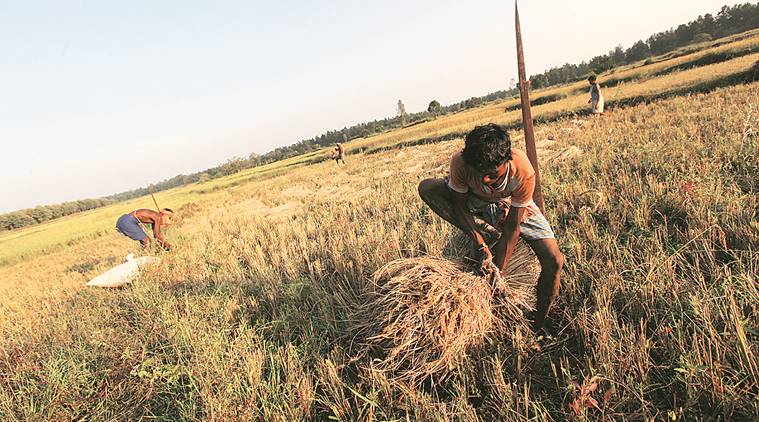English Today’s Paper ePaper INDIA Advertising Rural distress deepens: Wage growth dips, non-farm jobs hit

Rural wages have grown 3.8 per cent year-on-year in December, the lowest ever for this month. Together with depressed farm prices — annual wholesale inflation in December was minus 0.07 per cent for “food” and 4.45 per cent for “non-food” articles — they point to an overall picture of rural stress going beyond agriculture ahead of the Lok Sabha elections starting next month.
The national daily rural wage rate, based on a simple average for 25 agricultural and non-agricultural occupations, stood at Rs 322.62 in December 2018, 3.84 per cent higher than the Rs 310.69 for the same month of the previous year. Given annual rural consumer price index (CPI) inflation of 1.5 per cent, it means wages rose just over 2.3 per cent in “real” terms.
The average year-on-year wage growth for December during 2014 to 2018, under the NDA government, worked out to 4.7 per cent in nominal terms and a mere 0.5 per cent in real terms after netting out inflation of 4.2 per cent. In comparison, for the same month of the preceding five years (2009 to 2013) when the UPA was in power, nominal rural wages grew by an annual average of about 17.8 per cent. While CPI inflation for agricultural workers, too, averaged 11.1 per cent, the real growth in wages was still higher at 6.7 per cent a year.
The last five years, in other words, have seen a slowdown in rural wages even after adjusting for inflation, which has been far lower than during the UPA regime.
Interestingly, the lower wage growth in the last five years has not been confined to agriculture-related work. The Labour Bureau’s data shows the average growth in December for eight main agricultural occupations — ploughing, sowing, harvesting, picking, horticultural labour, animal husbandry work, general farm operations (irrigation) and plant protection — to be at 5.14 per cent, which is higher than the 4.68 per cent for general wages. Thus, even as farmers have experienced very low price increase or even deflation for their produce, agricultural wage growth hasn’t fallen as much, thereby translating into a double margin squeeze.
On the other hand, the December year-on-year wage growth for skilled workers – carpenters, blacksmiths, masons, plumbers, electricians and light motor vehicle/tractor drivers – has lagged behind overall rural wage growth in three out of the last five years (see table). Even lower has the average growth in wages been for construction (roads, dams, well-digging, industrial projects, etc.: 4.38 per cent) and general non-agricultural labour (porters, loaders, etc.: 4.32 per cent).

